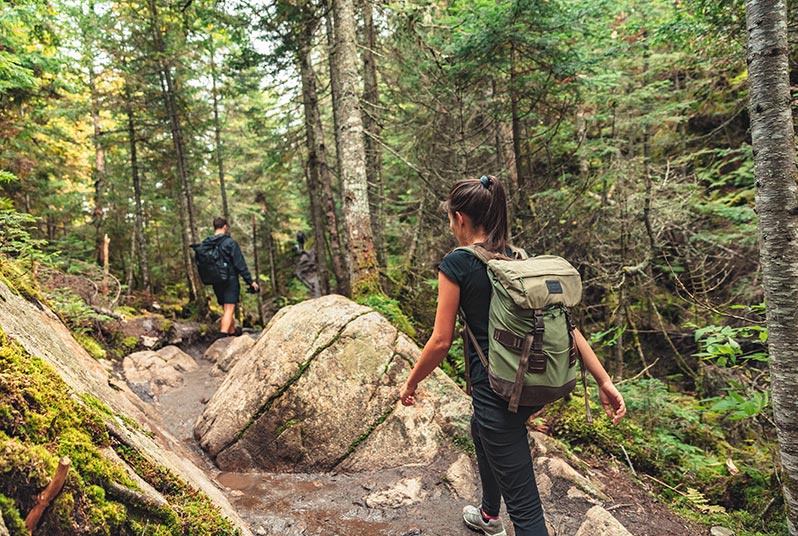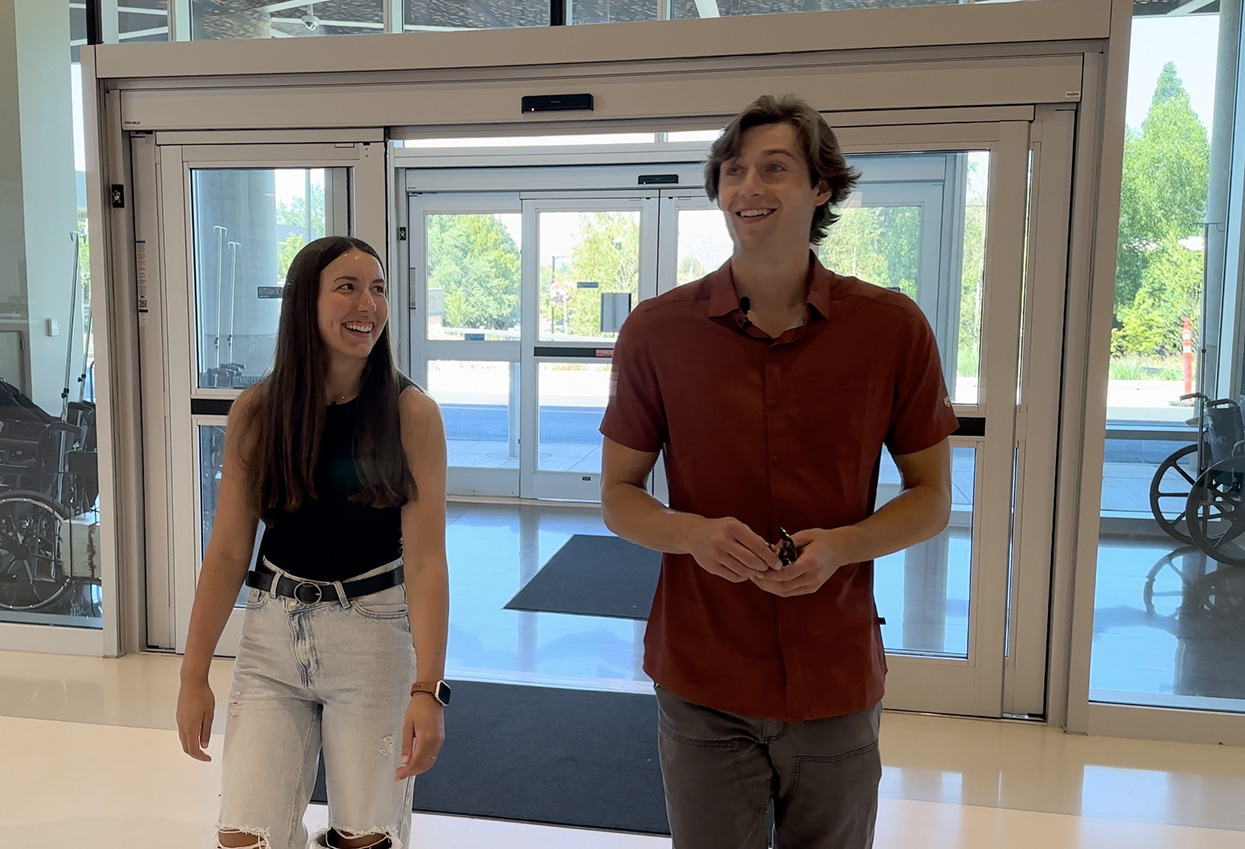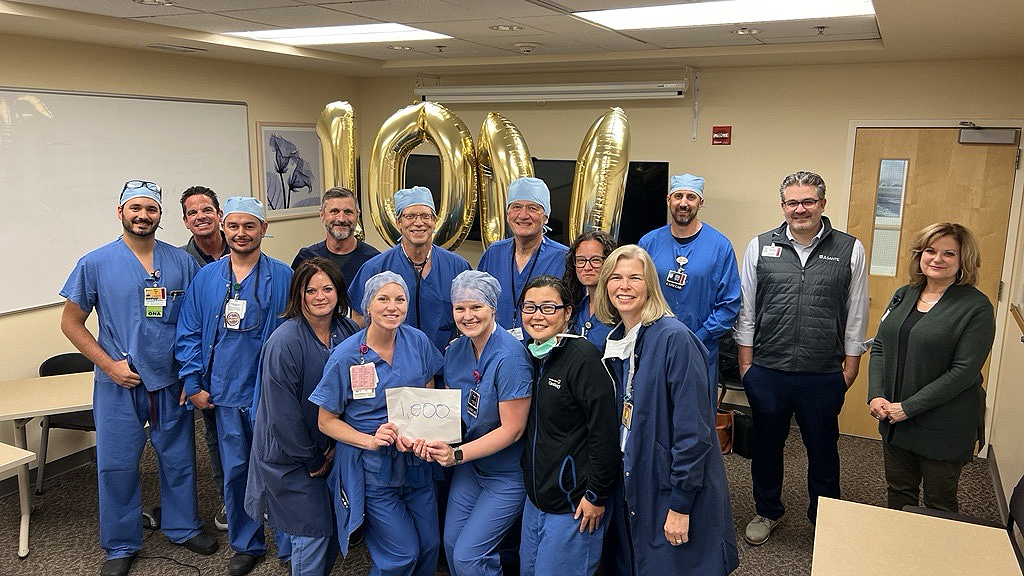Summary
Walking is a low-barrier, adaptable exercise that enhances overall health. This piece outlines various walking routes around Medford, Oregon, recommended by cardiopulmonary rehabilitation specialist, Carson Meyers.
While fitness buffs espouse the best exercise, an Asante specialist in cardiopulmonary rehabilitation upholds a basic truth.
“The best exercise,” said Carson Meyers, “is the exercise you can do now.”
And that exercise, for Meyers’ patients and many others, is walking. Stepping outside one’s front door is a testament to walking’s accessibility across the suburban landscape. Once walkers are ready to venture outside their neighborhoods for varied terrain, elevation and views, Meyers touts a few worthwhile routes.
“It’s always good to have a lot of different kinds of walking areas under your belt.”
Meyers’ go-to — the rehab supervisor walks it most pleasant days during his lunch break — is Medford’s “hospital loop.” This route from Murphy Road to Siskiyou Boulevard to Black Oak Drive to Barnett Road is an easy 1 mile. Without many street crossings and little to no incline, it’s ideal for beginners — and convenient for anyone receiving care or accompanying patients at Asante Rogue Regional Medical Center.
“The smoothest most solid ground is the way to go,” said Meyers of beginners’ walking routes.
Once walkers can rise to a challenge, the McAndrews hill route offers an inclined surface and elevation gain on well-maintained sidewalks in a safe, highly visible neighborhood, said Meyers. Starting on Medford’s Thrasher Lane, Meyers walks up East McAndrews Road until it meets Hillcrest Road. En route is Oregon Hills Park, which Meyers’ kids affectionately call “bear park” for its statues of cubs frolicking around a concrete log.
“Something with a destination typically is helpful for kids,” said Meyers. “You got to make it fun; you got to make it enjoyable.”
Another family-friendly route — and Meyers’ newest favorite — is Eagle Point’s Lucas Park. The 1.6-mile paved path circumnavigates grassy fields punctuated with picnic tables and benches, its centerpiece a woodland-themed play structure with slides, swings and jungle gym.
Emphasizing that no age is too young to start cultivating the habit of walking, Meyers said he traded in his family’s double jogging stroller five years ago when his youngest was just a year old. During COVID, the Meyers family made a point to walk somewhere different every weekend, beginning with 2-mile stretches and building up to 5 miles over time.
“Humans are meant to be mobile,” he said, explaining that muscles atrophy during periods of inactivity. Walking’s benefits for the entire body translate to higher quality of life on a longer timeline into one’s old age, said Meyers.
For walkers who can navigate uneven terrain over longer distances, the Lost Creek Lake shoreline combines paved sections with gravel and dirt portions of trail. In some spots more closely resembling a hike, the entire loop is 18 miles. Start early in the day during summertime at this Jackson County park north of Shady Cove.
“Don’t underestimate the amount of water you need to bring,” said Meyers.
Dirt and gravel surfaces of Medford’s Prescott Park offer numerous routes up and around Roxy Ann Peak. Avid hikers can maximize their trek’s slope and elevation while moderately paced walkers can still enjoy the expansive valley vista.
“Always walk with a buddy; buddy walks are great,” said Meyers. “If you are walking alone, tell people where you are going.”
And above all, “listen to your body,” said Meyers. Back off a walking regimen if soreness in the legs persists, a sign of overdoing it, he said. Most new walkers can double their distance after about two weeks, then keep progressing in smaller increments, he added.
Rather than logging steps, aim for 150 to 300 minutes of cardiovascular exercise each week, said Meyers. That’s only 30 minutes five days per week, doable for the vast majority of people. Given most can cover a mile in just over 15 minutes, a daily 2-mile walk is well within reach.
“There’s really no cap to that.”
Nor should fair weather bring an end to walking. As long as sidewalks aren’t icy, said Meyers, clouds and light precipitation can enhance a walk.
“I think there’s joy in a good rain jacket.”









